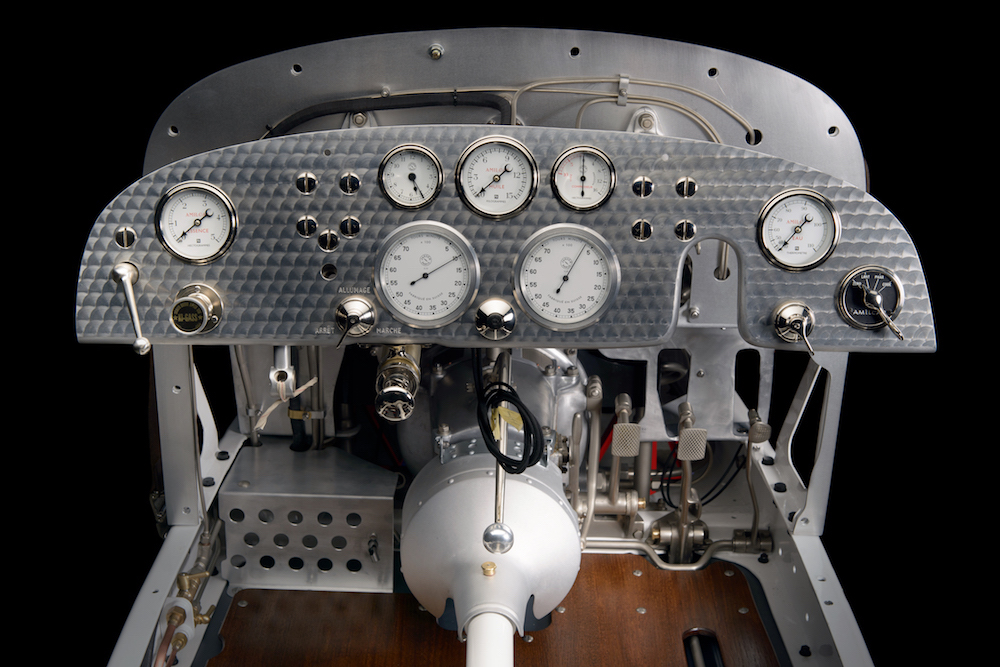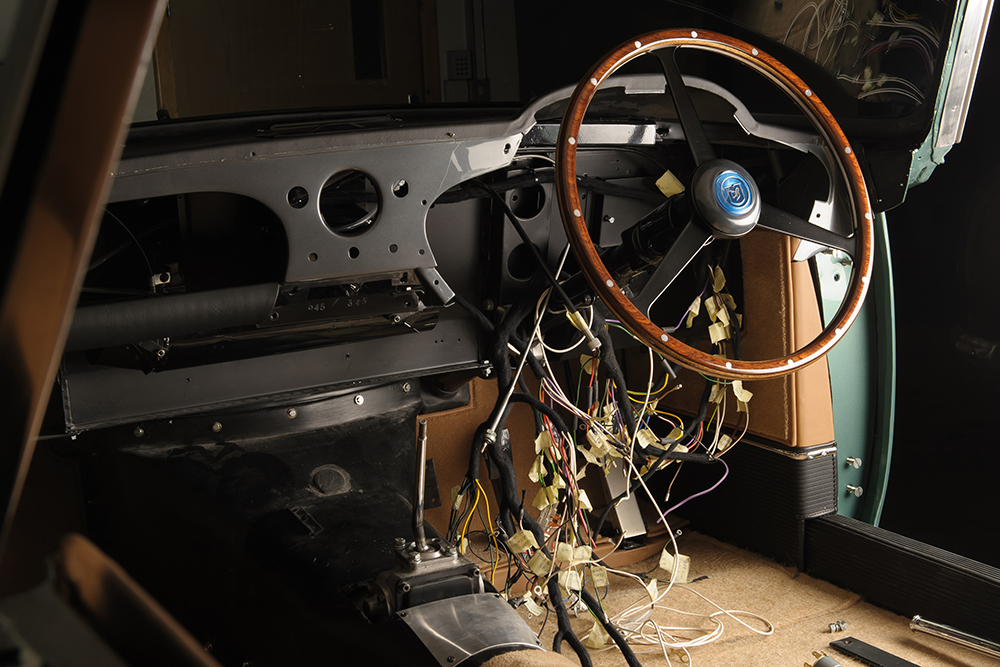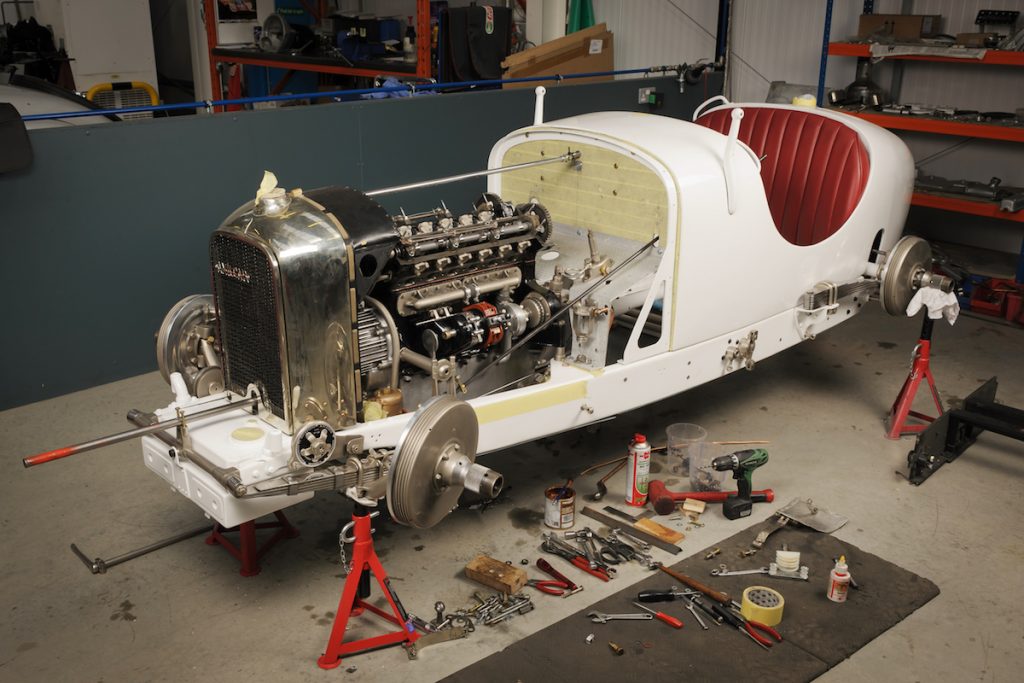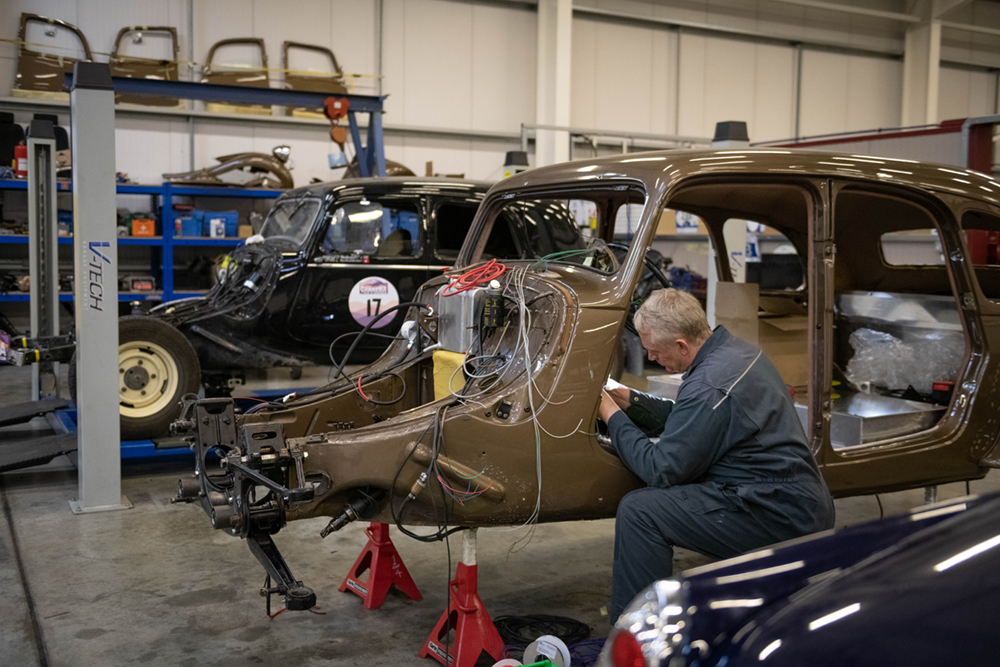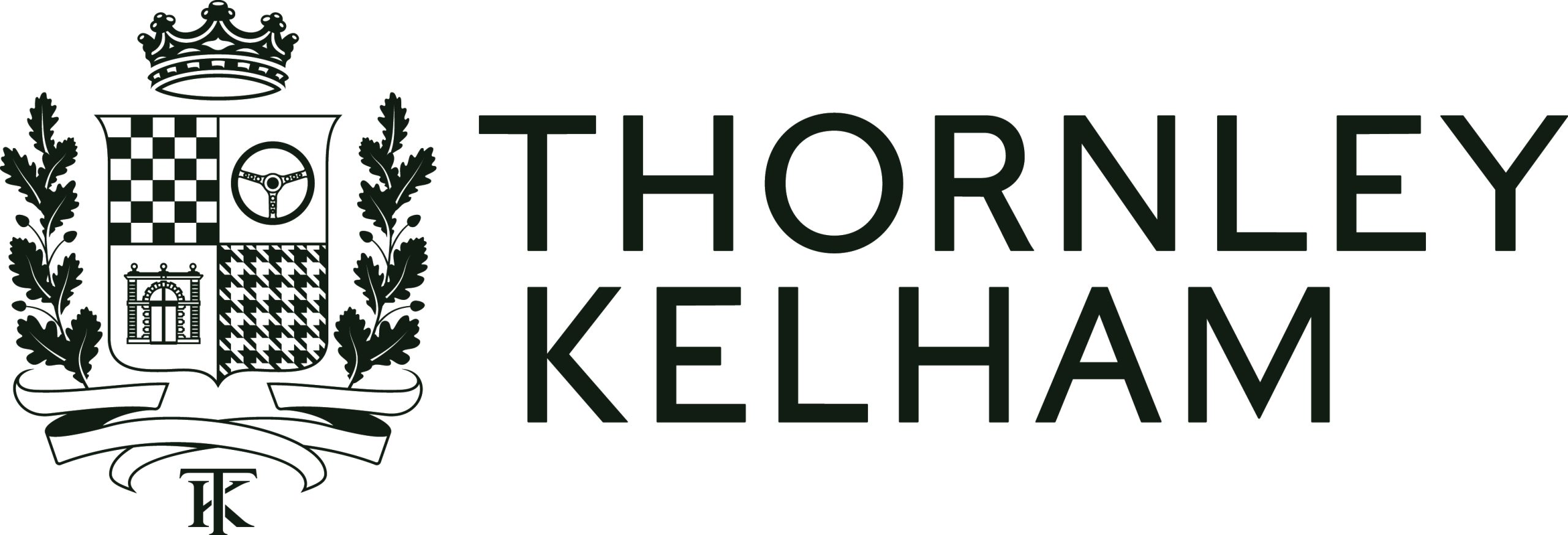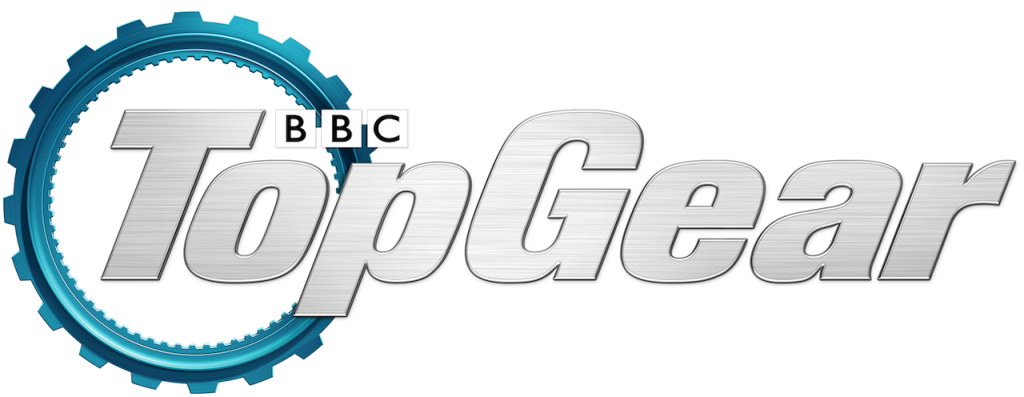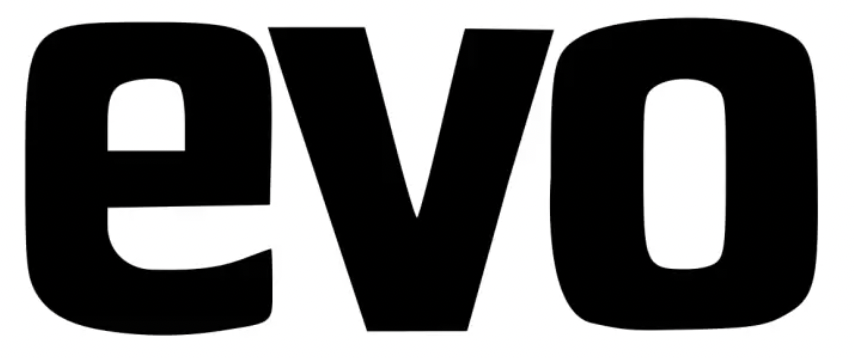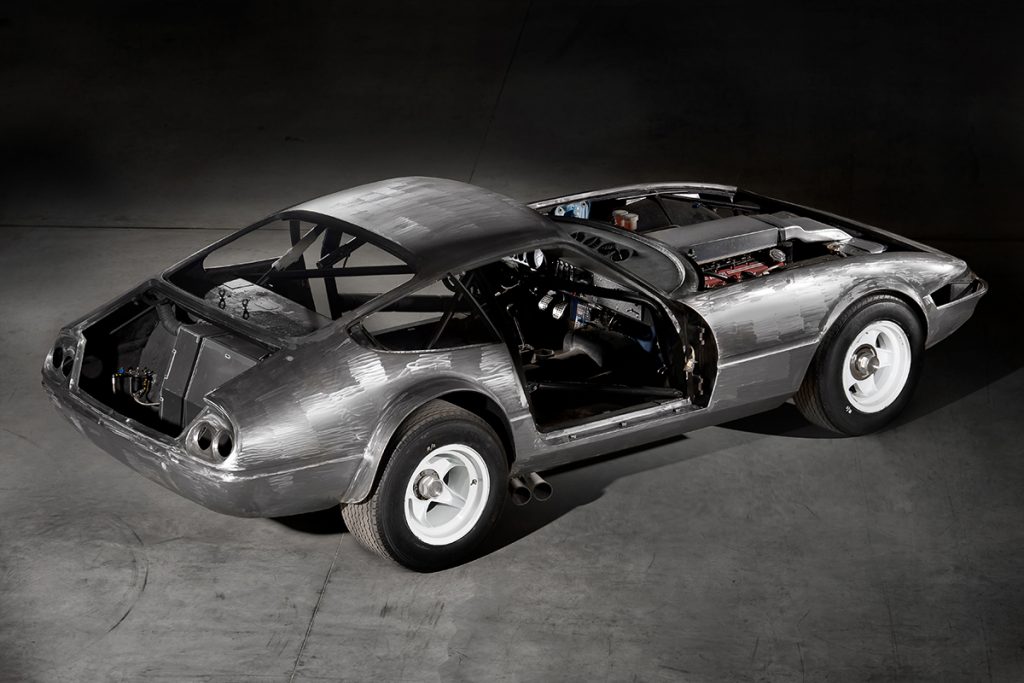
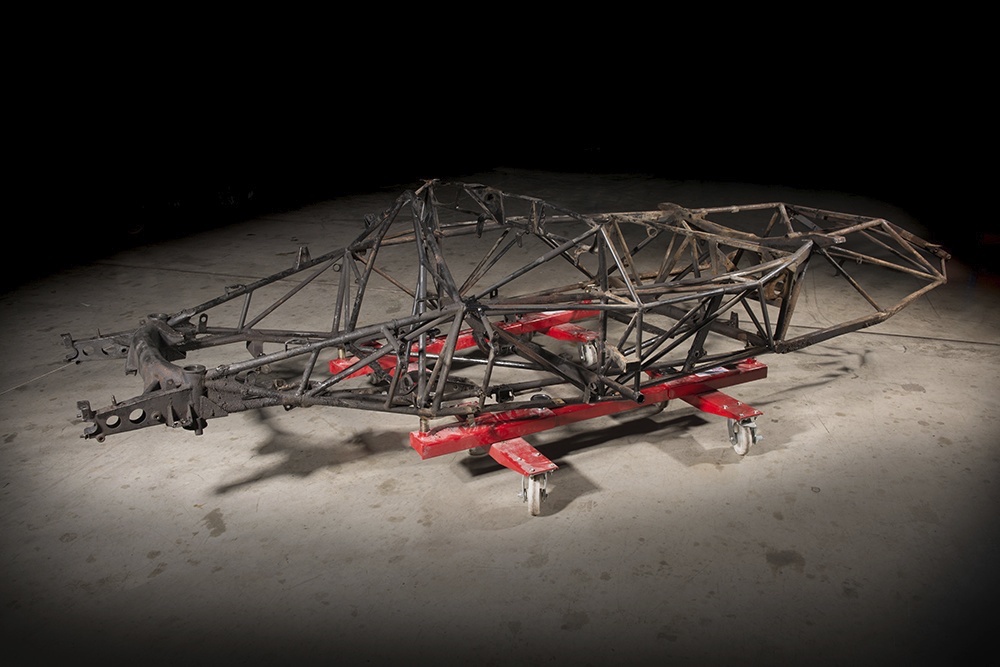
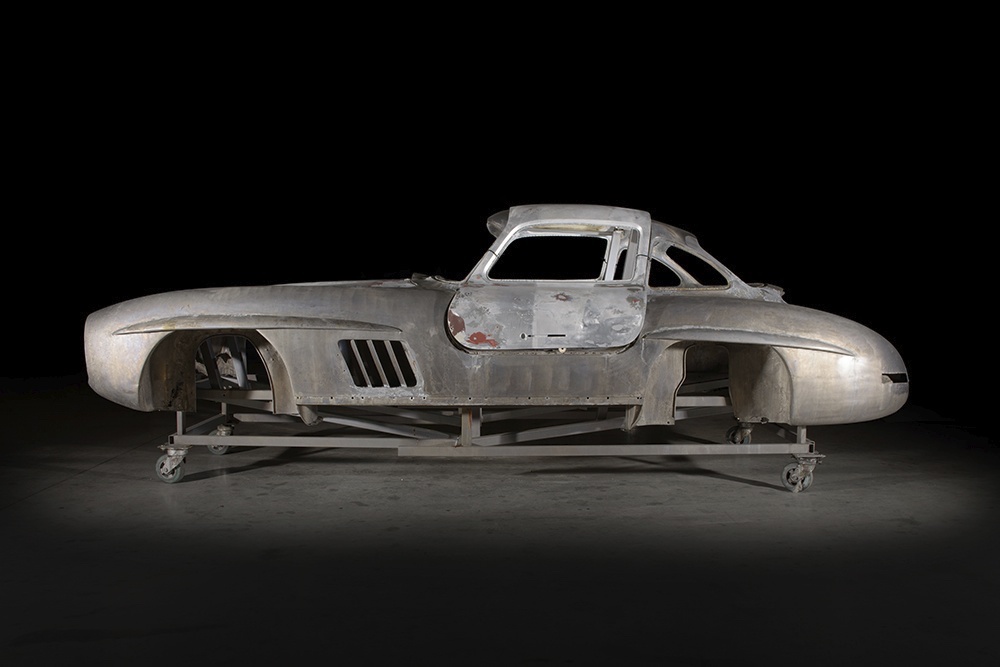
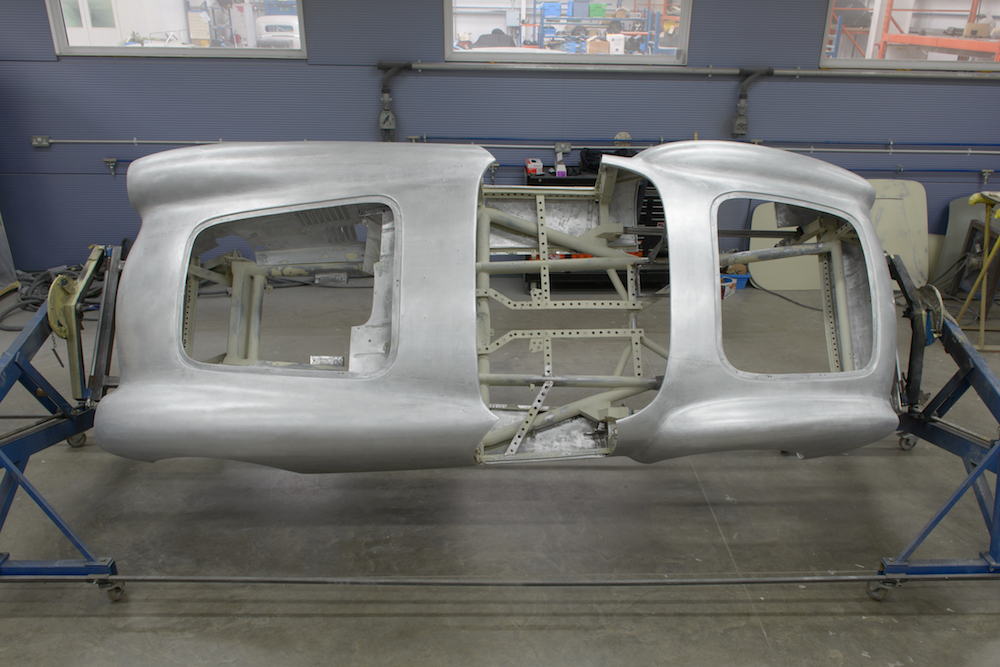
Metalwork
It’s not every day that you can see a Mercedes 300SL Gullwing, a Ferrari 365 GTB/4 Daytona and a Lancia Aurelia B24 Spider undergoing major body repair works in the same place at the same time.
Such scenes have been common as our talented team of panel beaters work to return valuable classic or vintage cars to factory original specification – or craft a redesigned body for our European programme.
Major bodywork repair is often the most time-consuming and expensive element of a restoration or rebuild. Most classic car owners understand the benefit of dealing with the early signs of corrosion as soon as possible, and many have experienced the pain – and gain – of undertaking a major bare metal restoration. Either way, we believe there is only one way to tackle any body work problems – thoroughly and completely. Whether eradicating the early signs of rust or corrosion, repairing accident damage, or stripping and repairing a complete chassis, body shell and panels, we are painstaking in every aspect of the restoration process.
We work regularly with steel and aluminium vintage and classic bodywork. We have an old school wheeling machine, folders, swagers, fly press and so on, to enable us to fabricate any repair panels necessary during the restoration process.
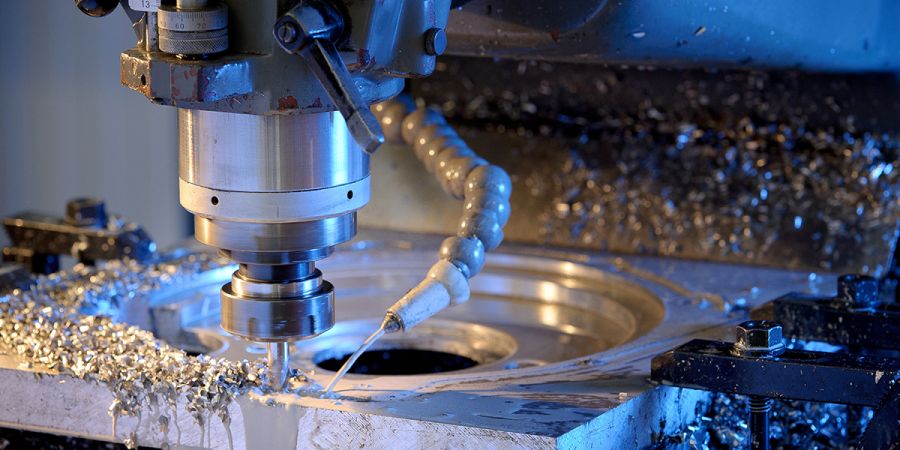
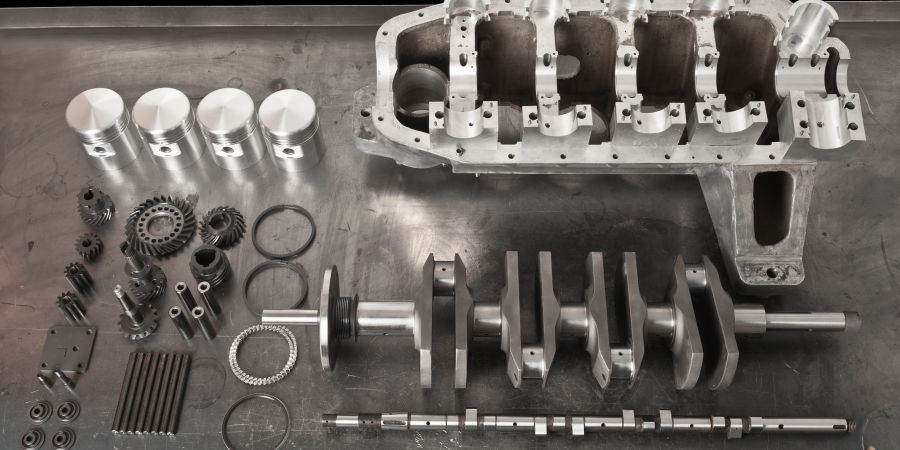
Engineering
In our well-equipped machine shop, we have previously machined cylinder heads for Lagondas, Hispano-Suiza (6 and 12 cylinder) and Amilcar, a crank case for a Type 43 Bugatti, blocks for Amilcar and Alvis Speed 25, and a supercharger for an Amilcar C6. Together with Paul, our Chief Mechanic, we have machined parts for, and rebuilt, numerous vintage and classic cars from Austin Seven to Vauxhall 30/98.
Having added the experience and capabilities of Steve, Jim and …Steve over the years, we have a great team ready to tackle any challenge.
With CNC milling capability, lathes, surface and cylindrical grinding, ‘Serdi’ valve machine and so forth at our disposal, we can design and fabricate machined parts from scratch or to your drawings.
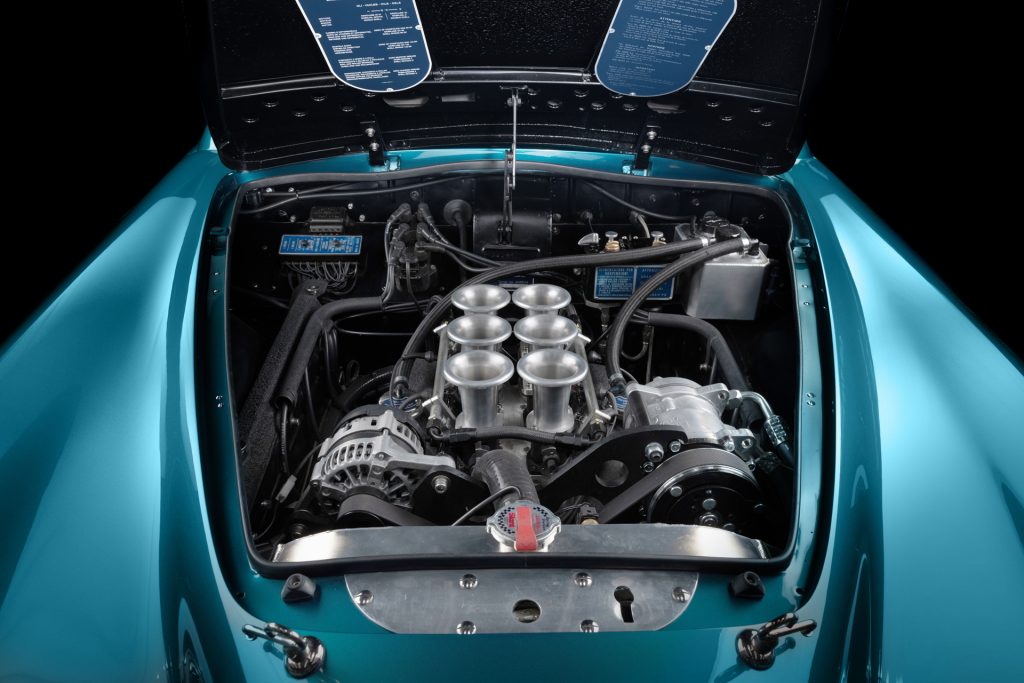
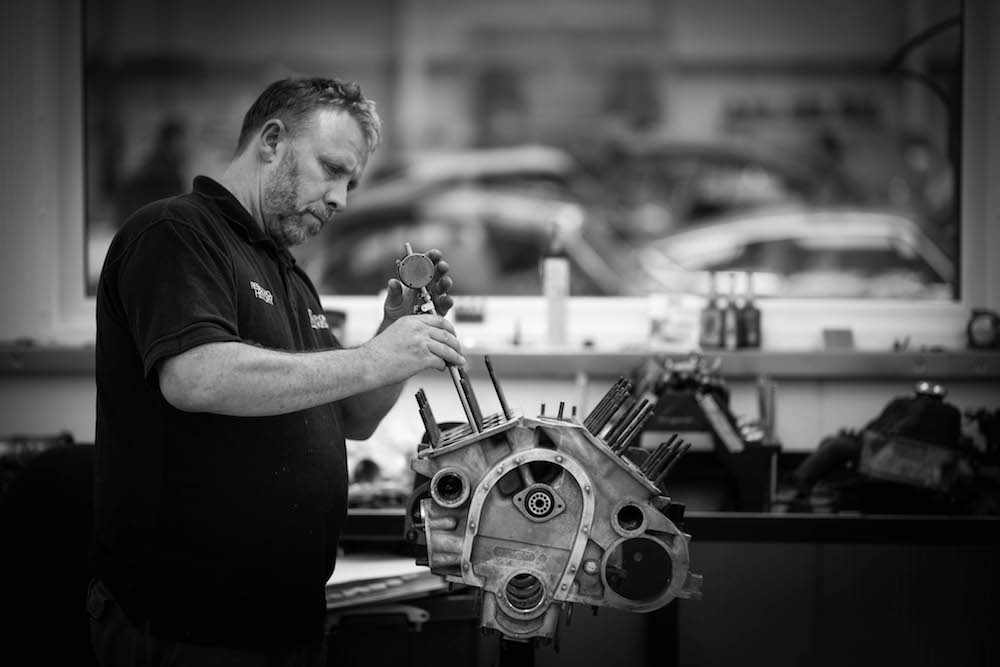
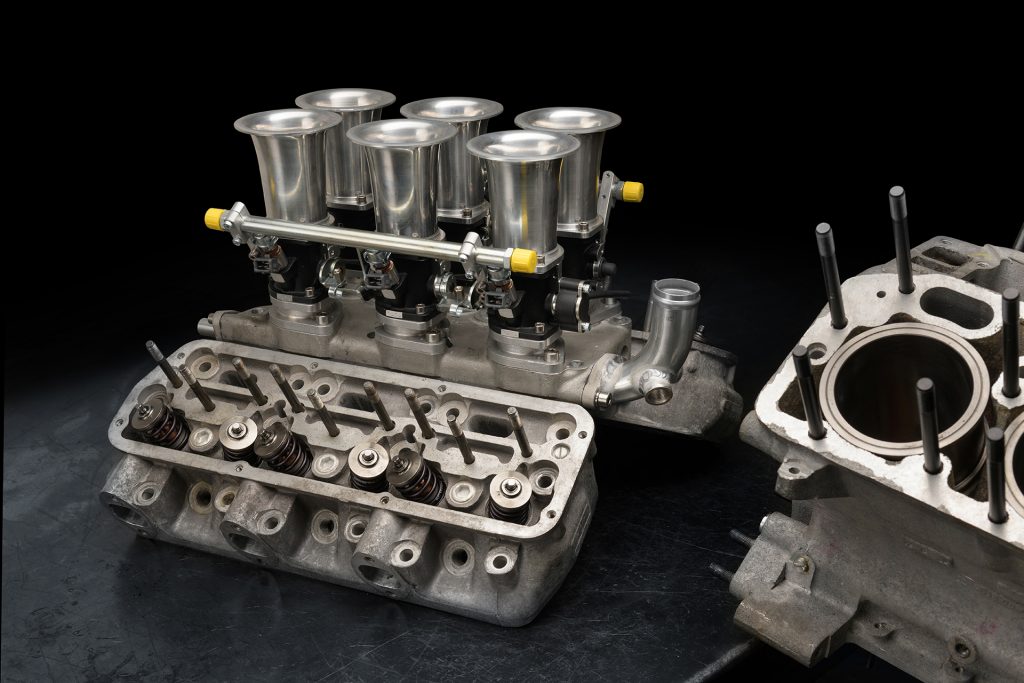
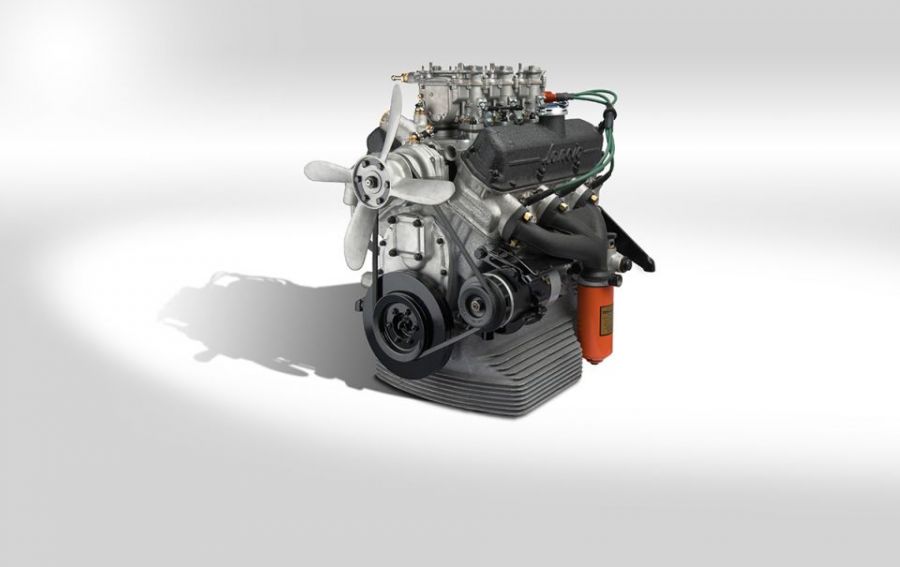
Engine building
Our team has extensive experience of re-building a wide range of engines, both pre- and post-war, including WO and Derby Bentleys, Lagonda, Alvis, Amilcar, Hispano Suiza, Lancia, Rolls Royce, Ferrari, Mercedes, BMW and Bugatti. We have a full range of machining equipment in our engine shop, are able to convert vintage engines to run sweetly on modern fuels, and work closely with a selected casting company in the manufacture of new blocks, heads, manifolds and more.
In 2020, we established a partnership with Race Techniques to deliver new levels of power, fuel efficiency and longevity for customers looking for the ultimate road or racing specification – their engine-building knowhow is second-to-none. As an example, at the 2018 Le Mans Classic, three cars – two Invictas and a Lagonda – used Race Techniques’ engines and boasted the fastest speed of any cars in their class, producing double the output of the original engines.
Having built a sate of the art dyno facility we can now harness the vast experience of Mike and Andy to analyse, develop and tune pretty much any engine for greater performance – and efficiency.
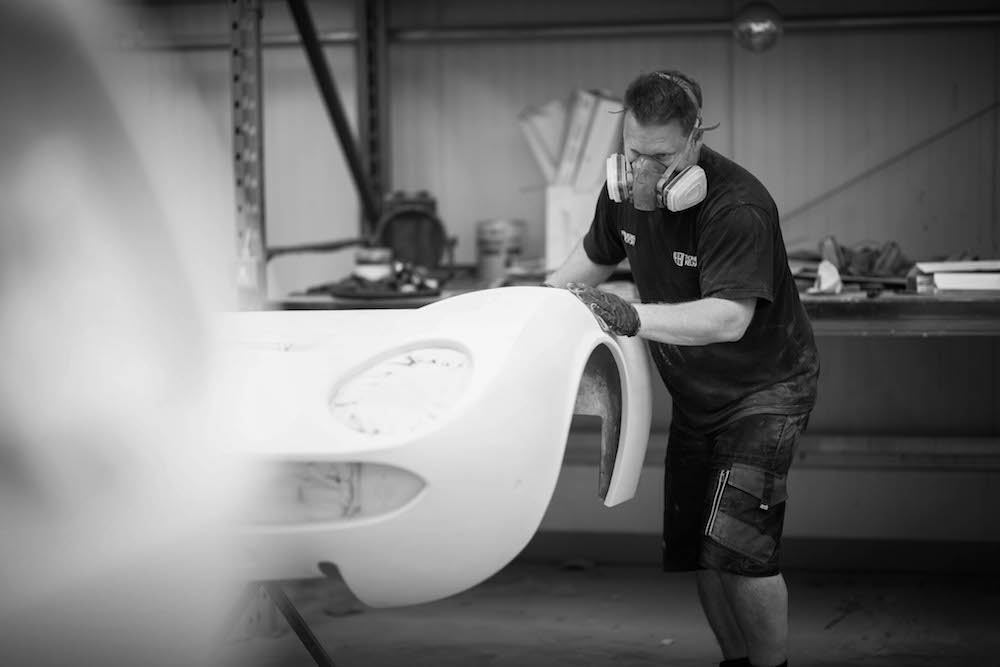
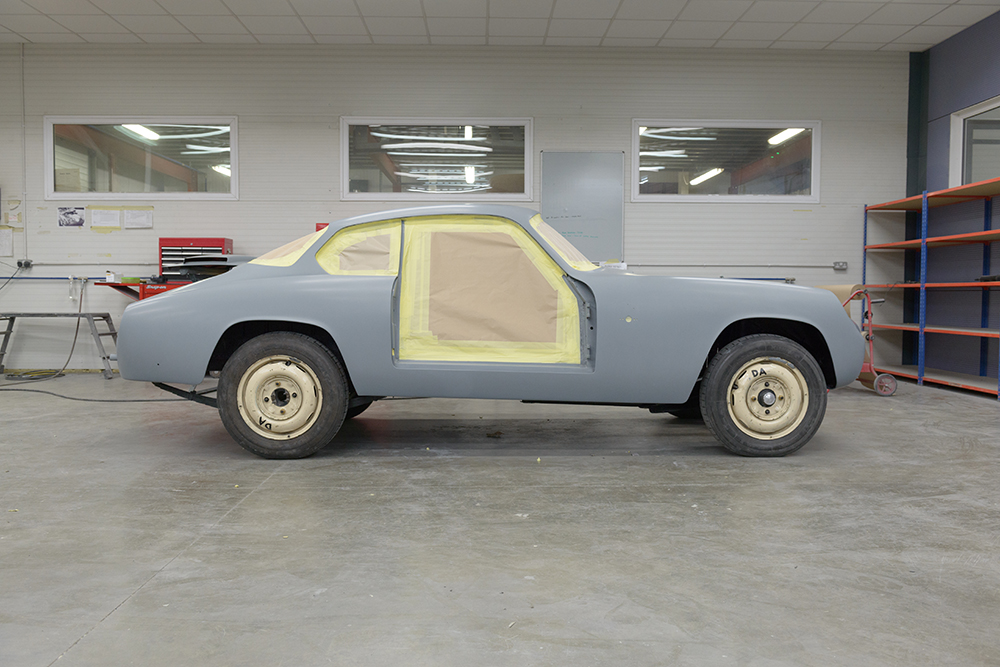
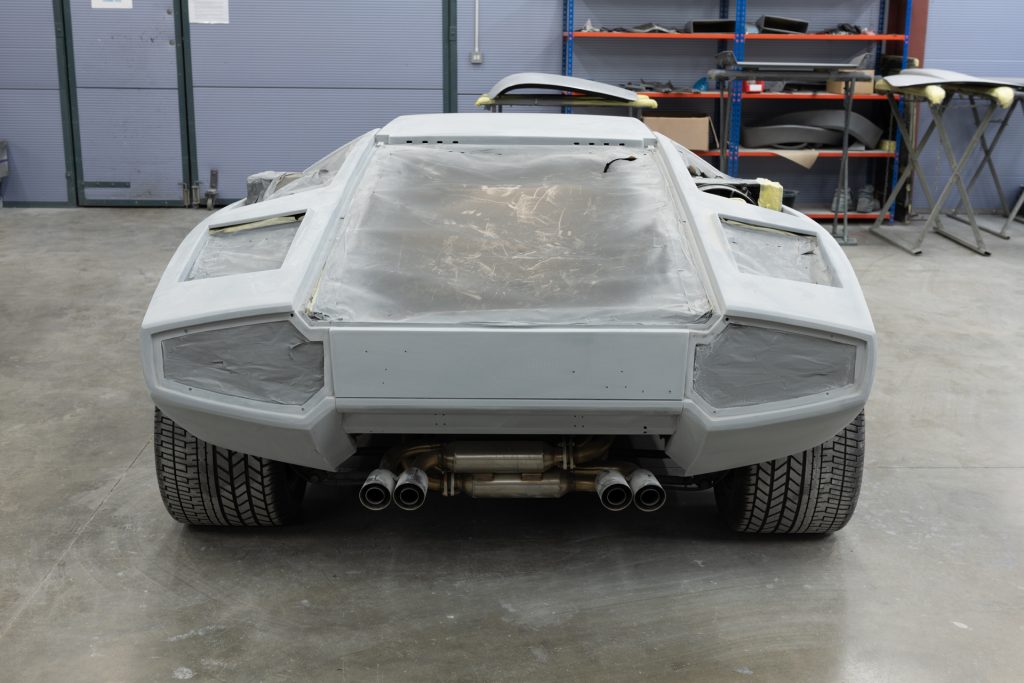

Preparation
Whatever paint type you have asked us to use on your car, or if it is to be coach painted, meticulous preparation is vital. The many hours spent here will never be seen, are sometimes unappreciated, and may seem expensive, but without them the paintwork will not be the best, and simply will not last.
Restoring cars with old aluminium bodywork is particularly complex. Cleaning every last trace of corrosion, old paint, welding flux and so forth is vital to ensure a trouble-free future. Maintaining a dry and warm working environment also minimises the risk of problems developing during the restoration process. Beware the car in bare metal which sits in a damp garage…
Proper preparation is time-consuming, whether we are shaping a perfectly smooth door panel, or masking, epoxy priming, stopping up, priming, flatting, re-masking, wet flatting and re-priming a louvred panel….but it is the basis of what we do.
Our team of Jasons, Graham (Hill!) and Rob have around a century of combined experience preparing and painting cars to the highest possible level.
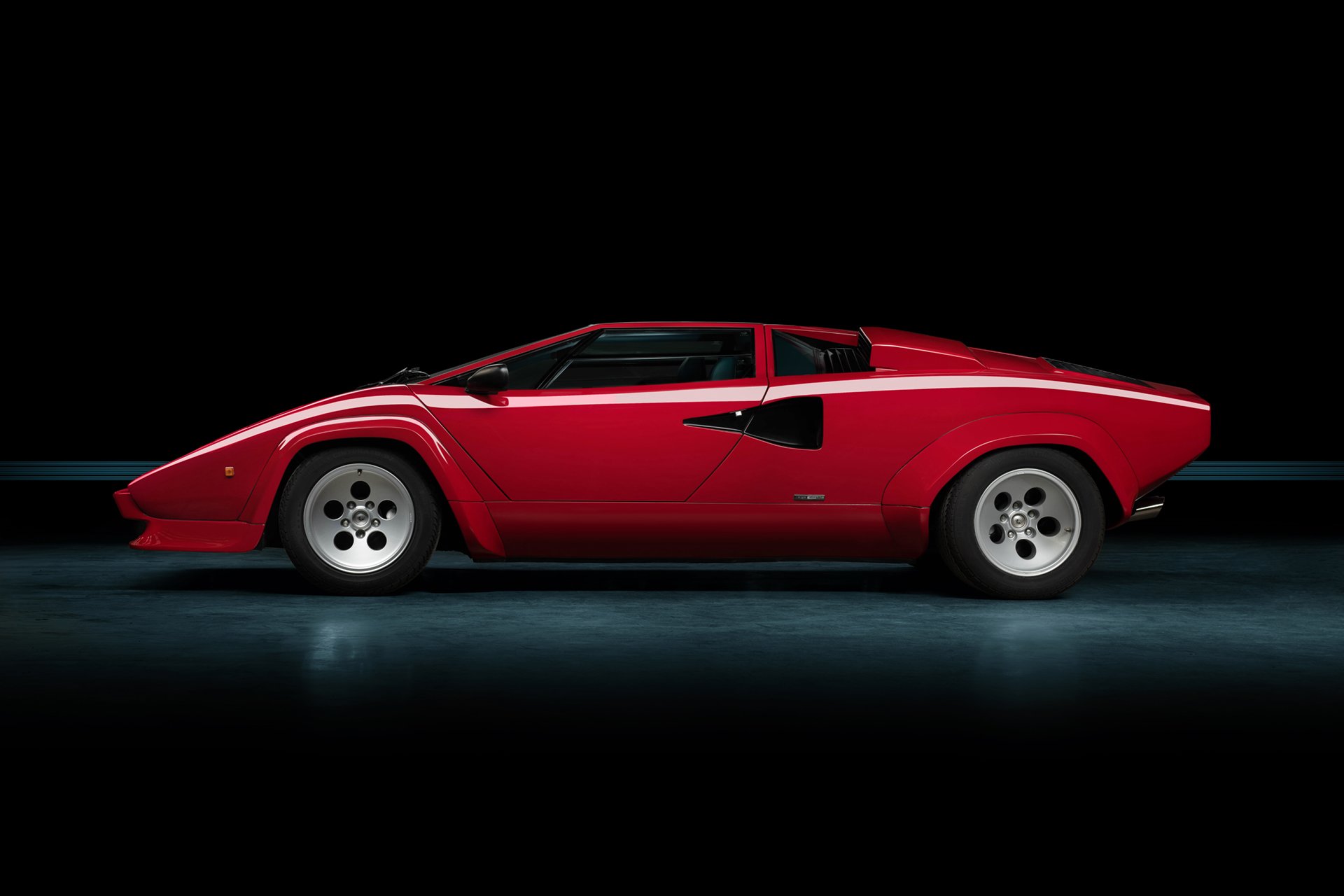
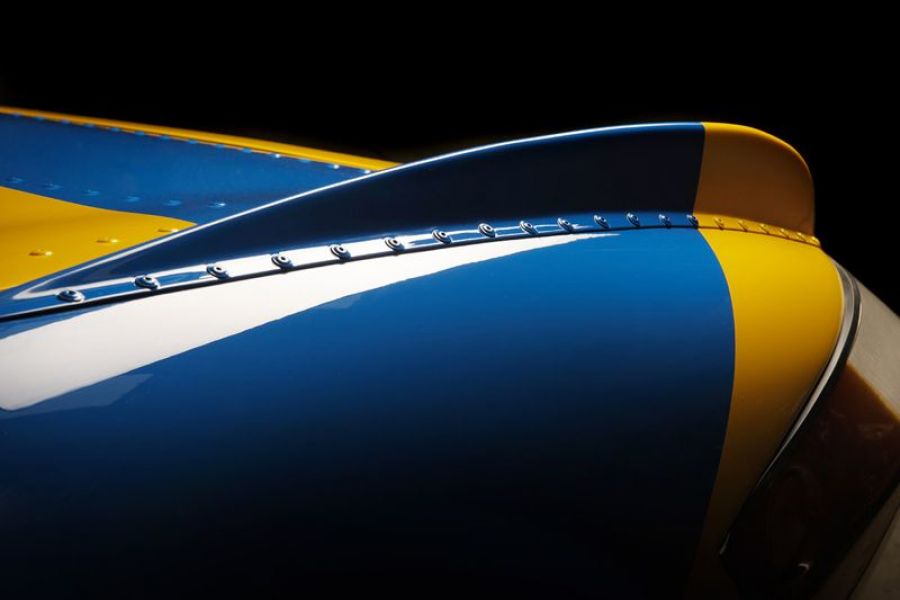
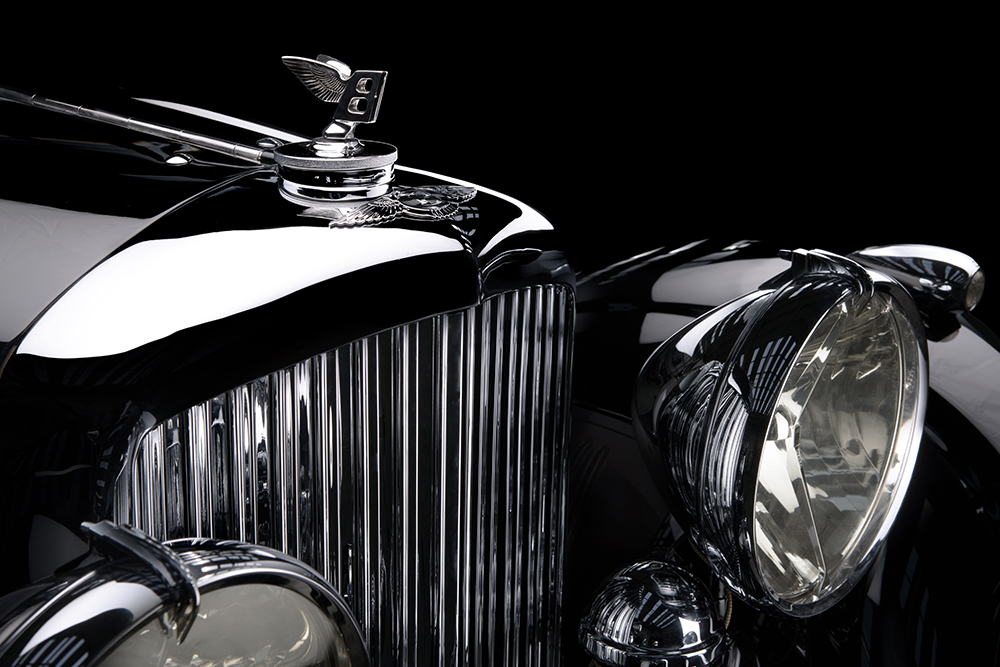
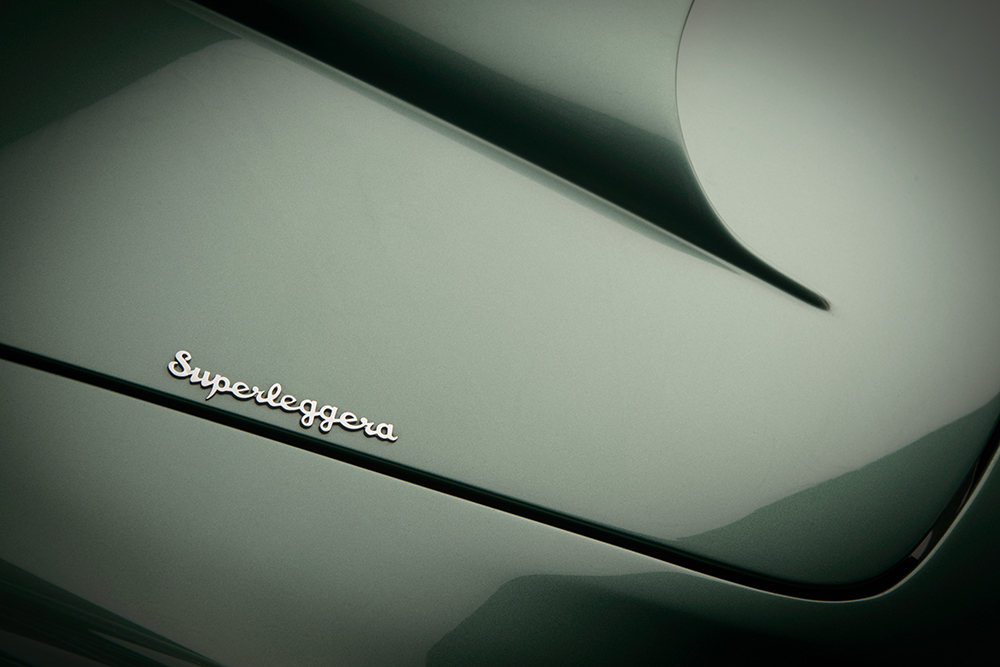
Paintwork
As the name suggests, coach painting developed to decorate horse drawn coaches and carriages and its origins date from several thousand years BC. The art form flourished in the 17th and 18th centuries when lead and linseed oil-based paints were used to produce highly coloured, glossy decorative and protective surfaces.
Finely hand painted and positioned lines known as coach lines further enhanced the shape and appearance of coach bodies, wheels and chassis parts, and these decorative processes became elevated to folk art with diverse applications such as narrow boat painting, furniture decoration and illustrative sign painting.
The age of steam saw new advances in coach painting techniques and further refinements in paint technology as huge locomotives and accompanying rolling stock needed to be efficiently and consistently decorated to a very high standard using the ancient method of applying liquid paint by hand held brush.
Today at Thornley Kelham we use all paint types available; wherever possible consistent with your car’s original finish. We still offer coach painting by hand, and regularly use – and prefer – nitrocellulose, which gives a deep finish which improves with time and polish. Solvent – based two pack paints, both solid and metallic, and occasionally, modern water -based paints. Whether we purists like or not, water-based materials will be need to be adopted increasingly in the classic car world.
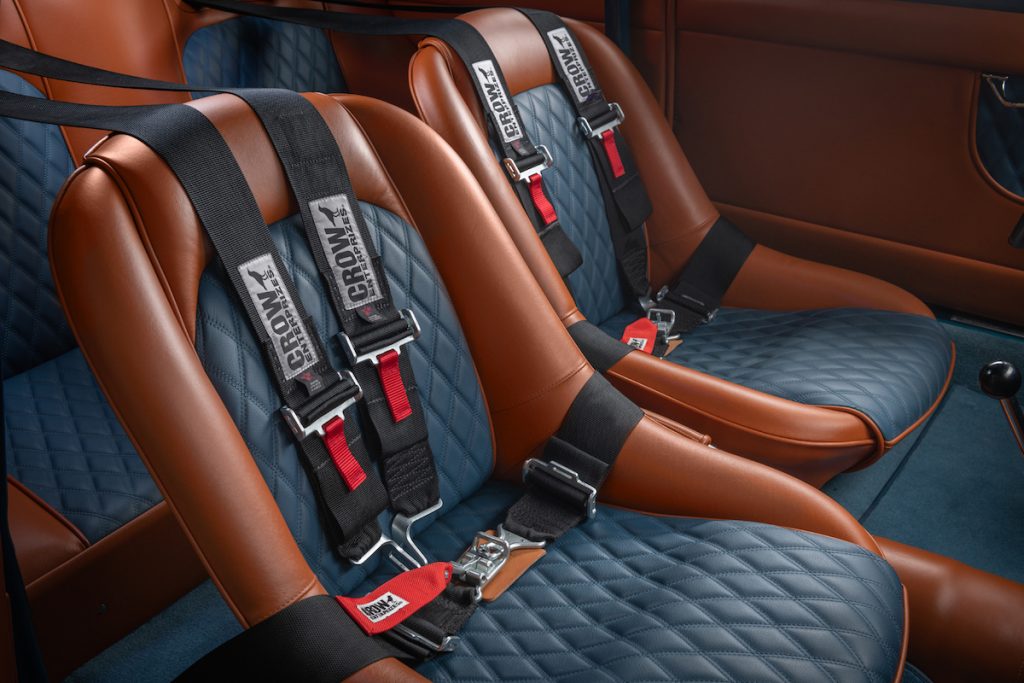
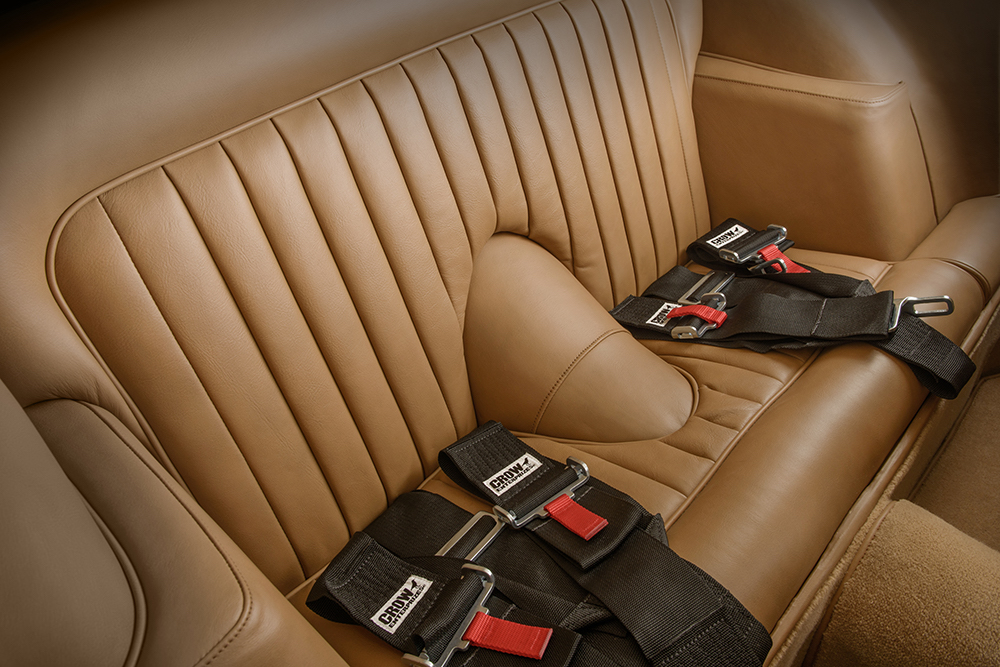
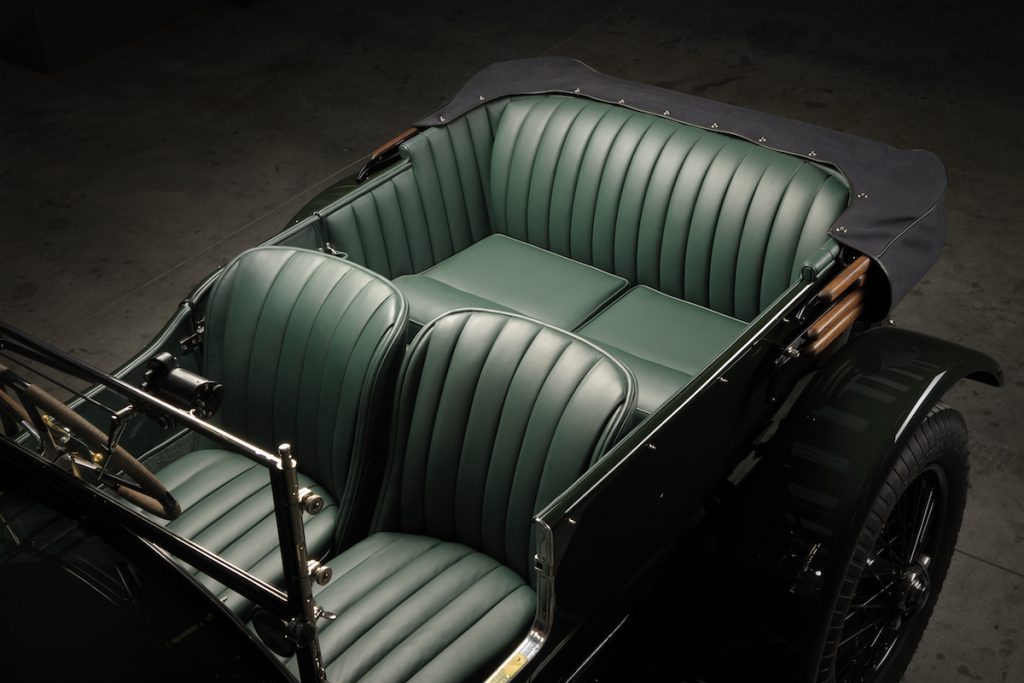
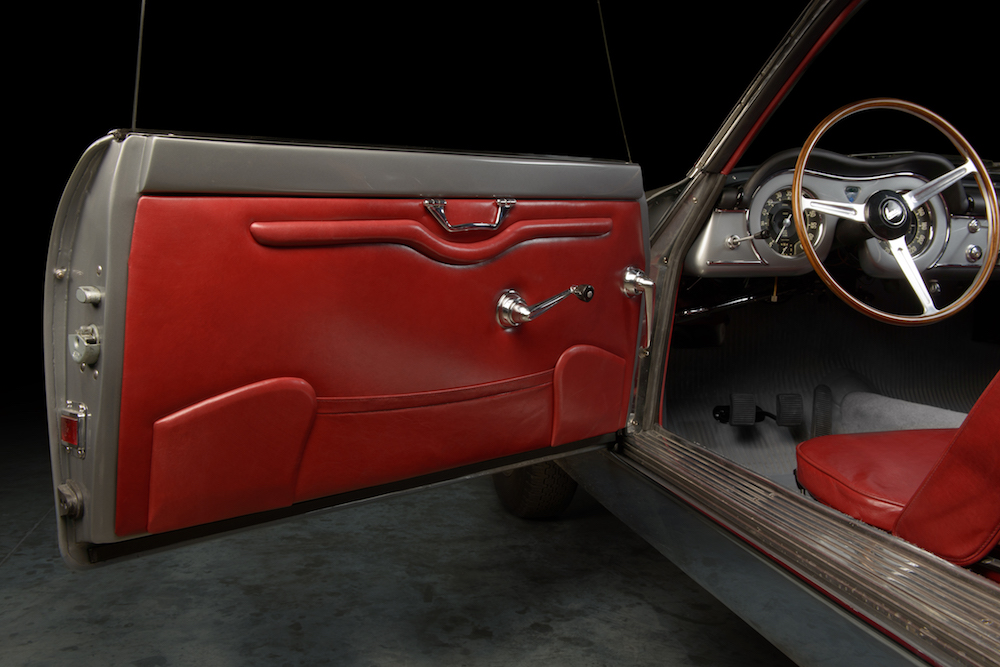
Coach trimming
Second perhaps only to paintwork, the quality of the trim gets a car noticed – or criticised. We project-manage all aspects of trimming – from a full retrim, to hoods and headlinings, tonneau covers and hood bags, carpets and rubber matting.
We research the trim options available on your car in period, or offer modern alternatives if you prefer. So your headlining can be West of England cloth, perforated vinyl, or even Alcantara.
We also have a great relationship with Jonathan Connolly (of Connolly leather); have used his ‘Vaumol’ leather several times, and we have samples of many of his different leathers in-house. We can of course work with any leather samples you prefer. Suppliers across Europe enable us to offer period vinyl patterns, correct upholstery material and period rubber matting in various profiles.
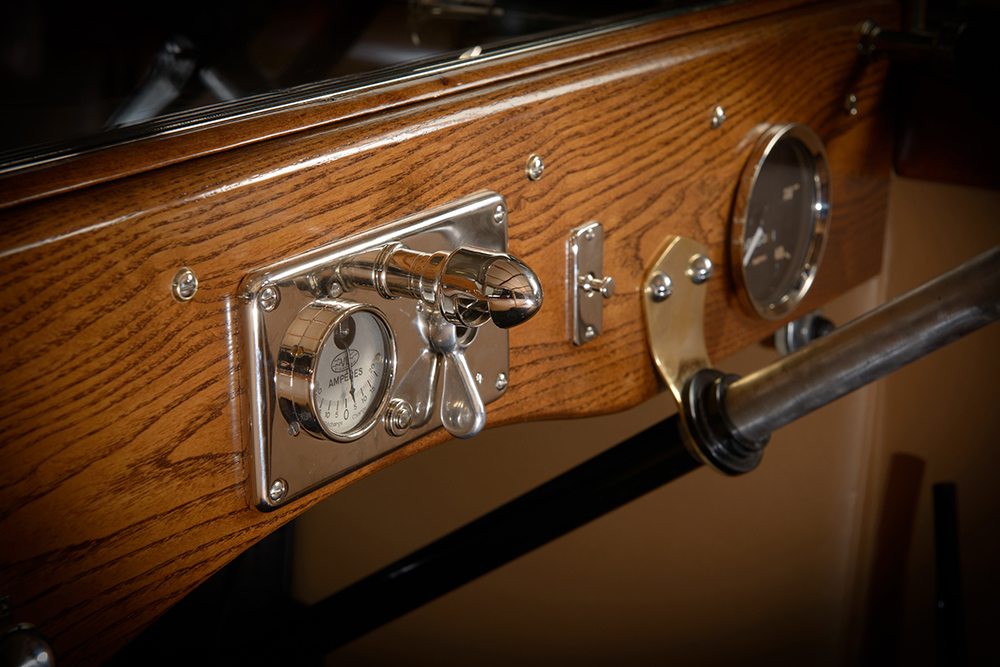
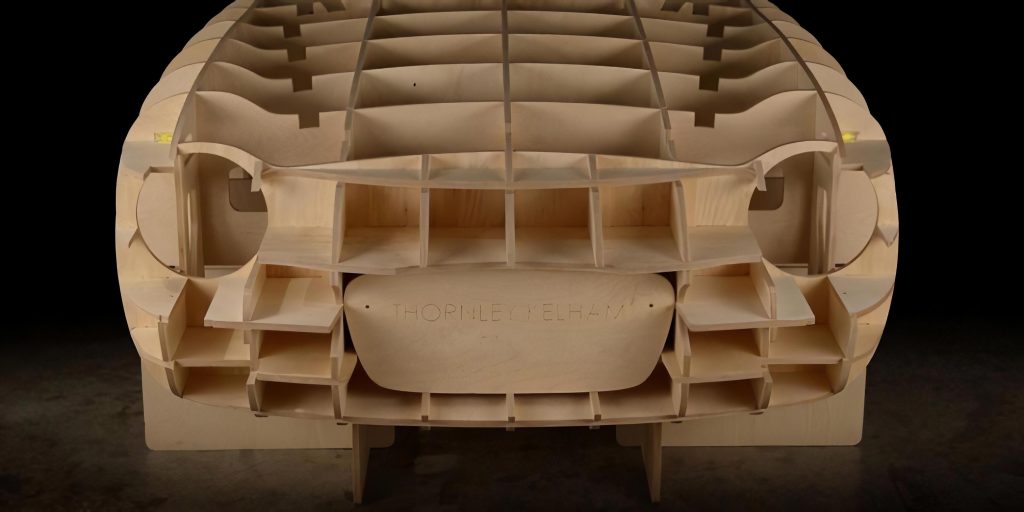
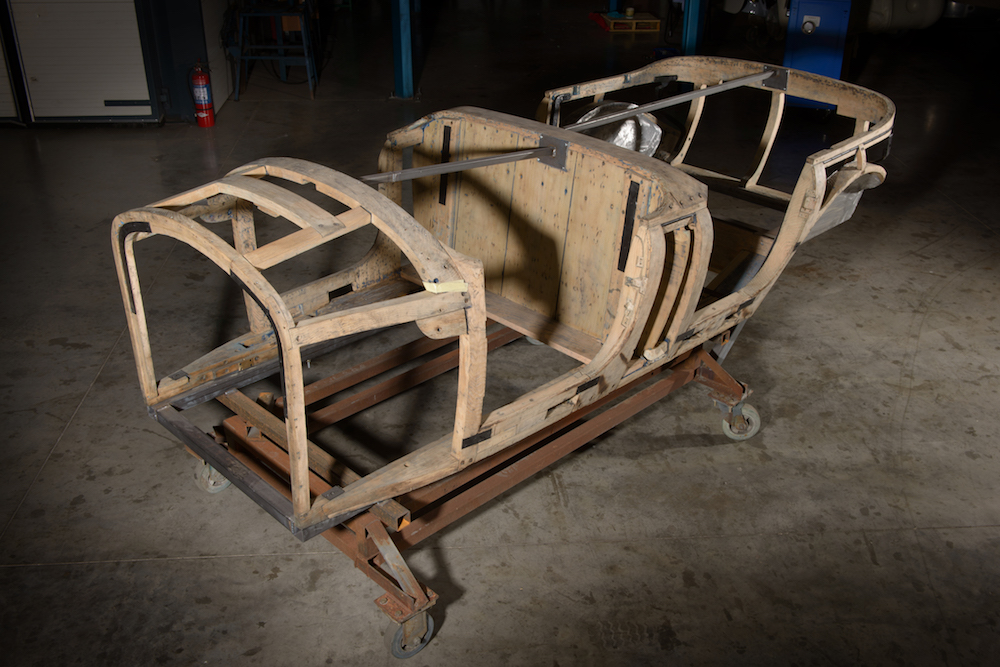
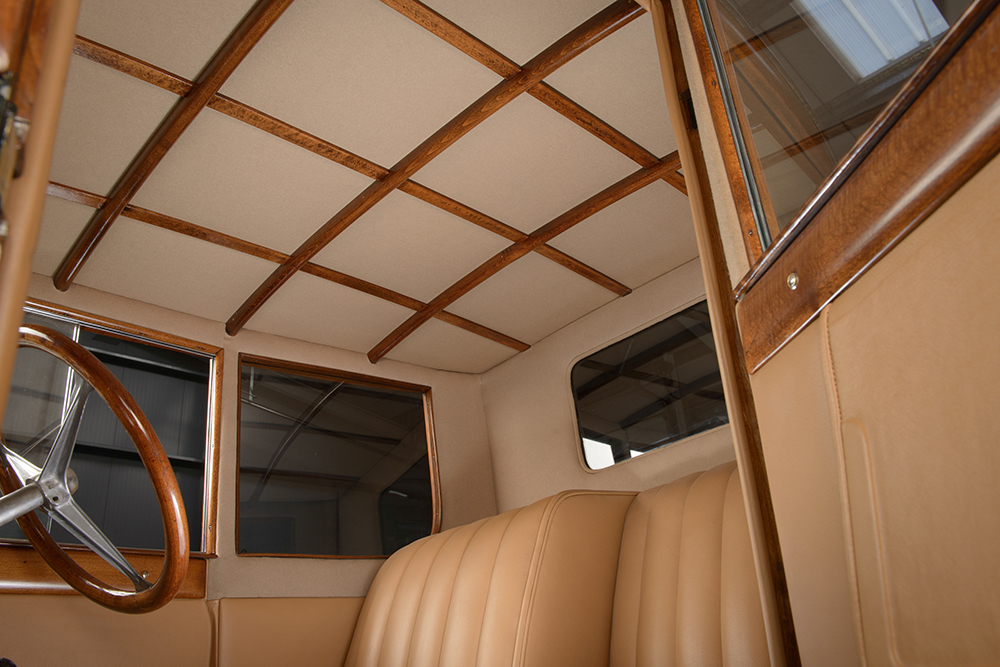
Woodwork
We work with a small number of highly skilled carpenters and coachbuilders who specialise in this craft. We cooperate very closely on planning, budgeting and managing projects and regularly go and inspect progress at various key stages. For minor works and repairs, the woodworker travels to us and carries out repairs in house.
Projects we have completed include Rolls Royce Phantom II and Bentley 6 1/2 litre, and 1911 Lancia Delta ash frames, and previously, the crafting of the sides, bed, and supports of a 1960s truck – in hardwood!
We also have wooden bucks made by to use as a reference jig. Metal panels are then offered up to the buck, which is an exact replica of the original car as it is made from a digital scan of the car, in this case a Lancia Flaminia Zagato.
Assembly
At the end of the restoration process, cars are meticulously put back together by our skilled technicians who specialise in this part of the process. The car is rewired, all replated parts are refitted and the drive train installed. All refurbished, restored or replaced components are put back onto the car and it emerges from our Strip/Fit team looking resplendent. Every fully restored car will then be test driven for 500 miles before being signed off for customer collection.
